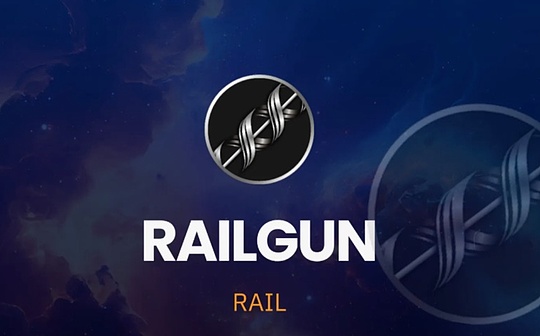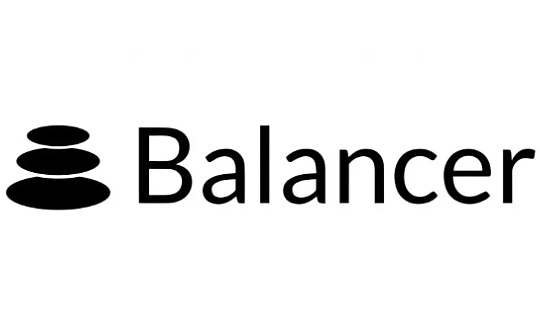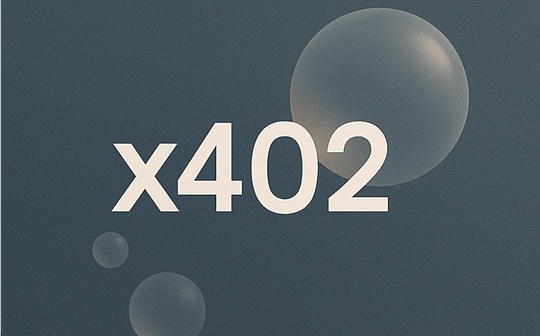
Author: Will Owens, Research Analyst at Galaxy Digital; Translation: @bitchainvisionxz
The term “crypto” originally meant “hidden” or “secret” currency, but for much of its history, privacy protection was never really taken seriously by the industry—until recently.
The privacy narrative has come back into focus over the past few weeks.The old privacy coin Zcash (ZEC) has increased by 700% since September, and countless privacy experts have emerged in the encryption field seemingly overnight.Some prominent Bitcoin figures have questioned the rise as “manipulated,” warning that buyers may be “exiting liquidity” (a term used to refer to late entrants being forced to take over when early players sell off).Economist Lyn Alden specifically reminded investors to be wary of the “joint pull trap”, while investor Naval Ravikant immediately retorted with the core argument: “Transparent cryptocurrencies cannot survive government regulatory suppression.”
It’s worth remembering that Bitcoin’s anonymous founder, Satoshi Nakamoto, acknowledged the network’s privacy limitations as early as 2008 in a white paper.

While CoinJoin implementations like Samourai and Wasabi were once popular in the Bitcoin network, they are facing increasing regulatory pressure.Samourai has effectively ceased operations after the arrest of its founder, and Wasabi also terminated the CoinJoin function in June 2024 due to regulatory pressure and began to block US users.
PayJoin is gradually gaining popularity as a simple tool that can break the “multi-input ownership heuristic” described by Satoshi Nakamoto, but the solution still requires interaction between users.As mentioned above, Satoshi Nakamoto actually revealed a deeper problem caused by Bitcoin transparency – multi-input homology presumption assumes that all inputs of the same transaction belong to the same owner, which allows blockchain analysts to more accurately track the flow of funds and cluster addresses.Zcash, which was born as a fork of Bitcoin, implements transaction shielding function through zero-knowledge proof, directly solving the fundamental privacy limitations that Satoshi Nakamoto has long pointed out.
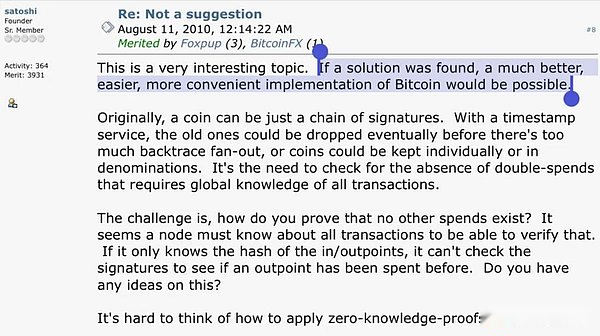
Key points of this article:
After years of silence, ZEC has surged about 8 times in the past month, far outperforming the broader market, forcing the industry to re-examine the value of privacy features.
The discussion reframed Bitcoin’s early debates over privacy rights and regulatory realities.
Zcash has surpassed Monero in market capitalization.
Zcash user experience has been significantly improved (see Zashi wallet).
Cross-chain intent architecture reduces operational friction (such as NEAR intent protocol).
The anonymity set continues to expand—for the first time, more than 30% of the ZEC supply is deposited into the shielded pool.
However, compared to Bitcoin, Zcash’s full node coverage is still weak.
1, development history and network upgrade
Zcash’s roots can be traced to academic research in 2013, when cryptographers at Johns Hopkins University developed the Zerocoin protocol.As researchers continued to improve the problems of high computing power consumption and low efficiency of the original solution, the design gradually evolved into Zerocash and eventually Zcash.
In 2016, cyberpunk pioneer Zooko Wilcox and the Electric Coin Company led by him created Zcash as a privacy-enhancing fork chain of Bitcoin.Its goal is clear: while retaining the monetary DNA of Bitcoin, it also fixes its most criticized design flaw (which Satoshi Nakamoto himself admitted) – the lack of transaction privacy.
Unlike Bitcoin, where all on-chain transactions are publicly visible, Zcash uses zero-knowledge proof technology zk-SNARKs (zero-knowledge succinct non-interactive argument), allowing users to verify the validity of transactions while hiding the sender, receiver and amount.Although Monero came out earlier and implemented privacy protection through ring signatures, stealth addresses and bulletproof protocols, Zcash is still the first mainstream blockchain to integrate zk-SNARKs at the protocol layer.
Zcash uses an on-chain funding model that allocates a portion of block rewards to community-led initiatives rather than specific organizations.According to the current ZIP 1016 framework, 8% of block rewards are injected into the Zcash Community Fund (ZCG), and 12% flows into the holder-controlled fund managed by currency holders’ votes.Neither the Electric Coin Company (ECC) nor the Zcash Foundation will receive automatically allocated shares, but can apply for funding through the above mechanism.
ZcashAfter many network upgrades (NU):
Sapling (2018): Achieving a leap in energy efficiency for shielded transactions;
Heartwood (2020): Introducing shielded currency base output, allowing miners to receive block rewards privately;
Canopy (2020): With the launch of the first halving, a four-year development fund jointly managed by ECC, Zcash Foundation and Community Fund will replace the original founder rewards (part of which was originally used for early investors);
NU5/Orchard (2022): Enable Halo 2 recursive proof to replace complex trusted settings, launch a unified transparent and shielded payee’s unified address, and establish an Orchard shielded fund pool;
NU6 (2024): Decentralized treasury management is achieved through the treasury within the protocol, and the transparency of development fund storage and distribution is improved.
Currently, the protocol is preparing for the NU7 upgrade.
For most of ZEC’s life cycle, its market performance has continued to be weak, not only underperforming BTC, but also being overshadowed by Monero (XMR) in the long term.Monero provides basic anonymity for all users through mandatory privacy protection by default, but its mechanism relies on the ring signature scheme of a small-scale decoy set – a limited anonymity set composed of 15 decoy inputs mixed with each real transaction, which has been confirmed by research to have the possibility of partial de-anonymization.
Regulatory agencies tend to impose stricter scrutiny on Monero (due to its default mandatory privacy features). For example, the IRS Criminal Investigation Division commissioned Chainalysis and Integra FEC to study Monero transaction tracking technology in 2020.In contrast, Zcash implements an optional privacy mode through zk-SNARKs, which can fully encrypt transaction data and generate a larger anonymity set when using shielded addresses.
Although this dual-mode design may reduce privacy intensity due to user errors (such as misuse of transparent addresses), under the premise of standardized operation, Zcash’s cryptographic guarantee can provide more mathematically rigorous privacy protection.Its privacy layer also has anti-quantum computing properties, while Monero’s current ring signature scheme has not yet implemented this feature (the development team has acknowledged this flaw and plans to solve it through upgrades such as FCMP++).
Today, ZEC’s price action alone is reshaping a new industry narrative.
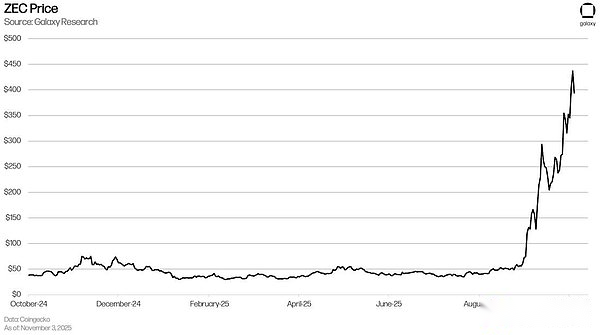
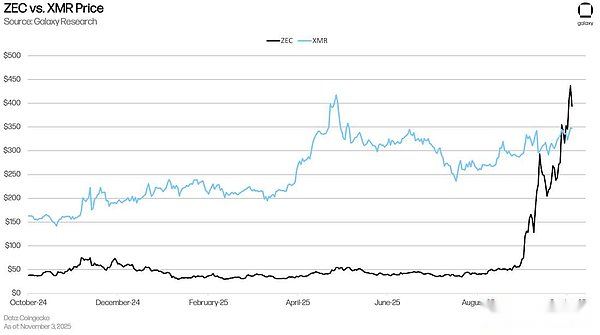
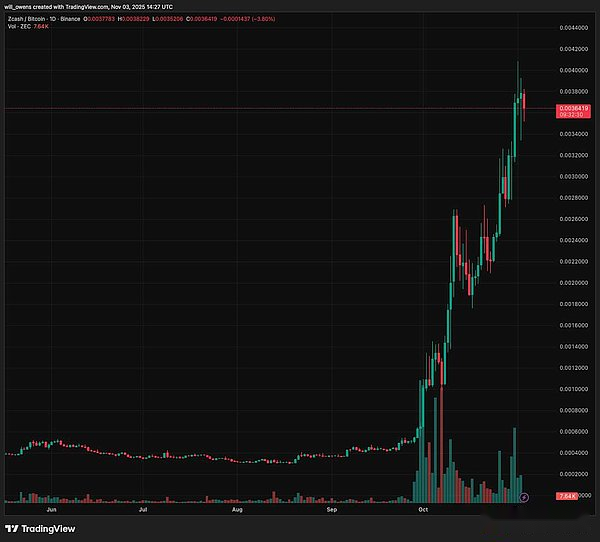
2, technical architecture
Zcash inherits the currency design of Bitcoin: a fixed total of 21 million ZECs, using a proof-of-work consensus, and halving is completed approximately every four years.The Equihash algorithm it relies on is more resistant to ASIC centralization than Bitcoin’s SHA-256, and the block generation time is about 75 seconds (the speed is about 8 times that of Bitcoin’s 10-minute block generation time).The Zcash halving rhythm also maintains a cycle of about four years. The next halving is expected to be held in November 2028, and the block reward will be reduced to 0.78125 ZEC.
Zcash uses a dual address system:transparent address (t-address):The function is similar to that of Bitcoin, and the balance and transfer records are completely open and available for inspection;Block address (z-address):The sender, receiver and amount are hidden through zk-SNARKs technology, and at the same time, it can be cryptographically verified that no new coins have been issued.
When a user transfers ZEC between two shielded addresses, the network does not check the transaction details, but instead verifies the cryptographic proof.This certificate essentially states “I have legal rights to use these tokens and the calculations are correct” but never discloses any non-essential information.At its core, the true meaning of privacy protection lies in this: only sharing the minimum necessary information to build trust.The larger the shielded fund pool, the more difficult it is to track the flow of funds. This is also the reason why the proportion of shielded pools has recently exceeded 30% – the size of the anonymity set is positively correlated with the intensity of privacy.
Orchard, the currently largest shielded pool, was launched on May 31, 2022. It uses the Halo 2 proof system to replace old pools such as Sapling and Sprout, which not only eliminates the trusted setup link, but also simplifies user operations through a unified address.At present, the Orchard pool has accommodated more than 4 million ZEC (accounting for approximately 25% of the total circulation), accounting for the absolute majority of the total of approximately 4.9 million shielded ZEC.
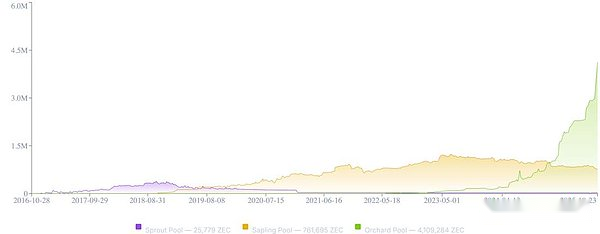
The supply of ZEC in transparent addresses has decreased by nearly 3 million, from approximately 14 million at the beginning of the year to approximately 11.4 million currently (approximately 70% of the total supply).
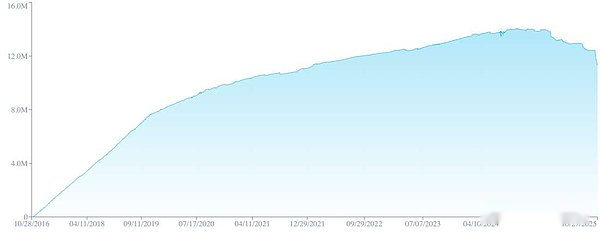
The Zcash network currently maintains about 100-120 full nodes, which has rebounded from the low of about 60 at the beginning of this year, but is still limited compared to Bitcoin (about 24,000 nodes) or Monero (about 4,000 nodes).This is mainly due to the significantly higher resource consumption required to run Zcash nodes: each shielded transaction needs to be verified by zk-SNARKs, whose CPU and memory requirements far exceed Bitcoin’s standard signature verification; the network’s multi-fund pool architecture (Sprout, Sapling, Orchard) further brings complexity, and frequent network upgrades also force node operators to continuously update software to maintain compatibility.The fluctuation trend of the number of nodes over time will be of great value to observe, especially in the context of the current privacy narrative that continues to heat up.
Looking to the future, developer Sean Bowe is promoting the “Tachyon Project” – a major expansion plan that is expected to significantly increase shielded transaction throughput by reconstructing Zcash’s synchronization mechanism and invalidation storage system.Bowe said Tachyon achieved a performance jump without introducing new shielding protocols, describing it as “breaking all bottlenecks with a relatively simple cryptography scheme.”In essence, Tachyon may be as important to Zcash as Firedancer is to Solana.
3, whyNEAR Intents?
NEAR Intents (intent protocol) is a new cross-chain coordination layer component built on the NEAR protocol, allowing users to declare intentions (such as “pay X amount of ETH to y address”) to replace the cumbersome process of manually managing cross-chain bridges, exchange operations, and wallet interactions.
Its bottom layer is implemented by intention executors (autonomous on-chain agents). These executors complete the automated realization of user intentions through operations such as liquidity routing, cross-chain exchange and settlement.
For Zcash, integrated intent functionality means users can now transfer assets between the transparent network and Zcash shielded pools without exposing each step on-chain.In actual operation, traders or institutions can transfer funds from visible blockchains (such as Ethereum) to Zcash to rebuild privacy. After completing the transaction in the shielded pool, they can also return to the original chain as needed to ensure that there is no direct connection between the addresses at both ends.
The integration of NEAR Intent Protocol with Zashi Wallet (ECC official wallet, Zcash’s most widely used wallet) eliminates technical friction for users to perform cross-chain and shielded operations.Zcash also natively supports view keys, allowing selective disclosure of masked transaction details for audit or compliance purposes.Together, these features make Zcash’s privacy protection both user-friendly for individuals and consistent with institutional needs.
4, why now?
Zcash’s nearly 700% surge appears to reflect a deeper cultural shift in the crypto space.As highlighted in a16z’s 2025 State of the Crypto Industry Report, search attention for privacy-related keywords on Google has increased dramatically in recent months.
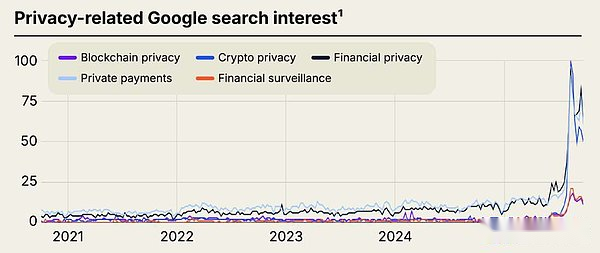
Many critics of Bitcoin lament its “institutionalization” trend, accusing Bitcoin of being “dominated by ETFs” and subject to centralized custody institutions.But Bitcoin itself has always been completely transparent. ETFs have not changed this feature, but only added intermediaries.In contrast, Zcash supporters position it as a “crypto version of Bitcoin” and see it as a return to cypherpunk ideals – a proposition that resonates in the context of the increasing popularity of on-chain monitoring (monitors include analysis companies such as Chainalysis and social media detectives such as ZachXBT and Lookonchain).The rise of Zcash has rekindled old philosophical differences about “privacy is a right” and “transparency is a regulatory imperative,” a conundrum the project has long tried to crack.
Zcash is gaining more attention as its privacy technology stack finally reaches consumer-grade standards.The Zashi wallet, launched in March 2024, eliminates the operational complexity of the blocking function, and the proportion of blocked assets is also on the rise.As more ZEC enters the blocked state, the anonymity set will expand, and Zcash’s privacy will continue to increase.
Perhaps the best sign of Zcash’s “strong comeback” comes from Hyperliquid—the decentralized exchange launched the ZEC perpetual contract a few weeks ago, allowing traders to establish leveraged positions on this privacy coin.The move signals a surge in demand for exposure to the coin, which has been dormant for several years.The introduction of perpetual contracts has increased ZEC market liquidity (open interest as of October 30 is approximately $115 million), while also exacerbating spot price fluctuations.
From a technical perspective, Zcash’s fundamentals have not changed, but the market’s perception of its technology has changed.This round of gains stems from the continued vocal support of top opinion leaders in the encryption field and a renewed awareness of the privacy features that permissionless currencies must have.
Regardless of whether ZEC’s price strength can continue, this capital rotation has successfully forced the market to re-evaluate the value of privacy (other privacy tokens such as RAIL, ARRR, and UMBRA also experienced strong buying).
This round of rise has brought Zcash back to market attention after being marginalized for several years.Whether speculative momentum can be translated into sustained growth of the network remains to be seen, but the renewed prominence of privacy issues reveals a deeper fact: in an increasingly transparent financial system, the ability to protect transaction privacy is once again regarded as a precious feature.

